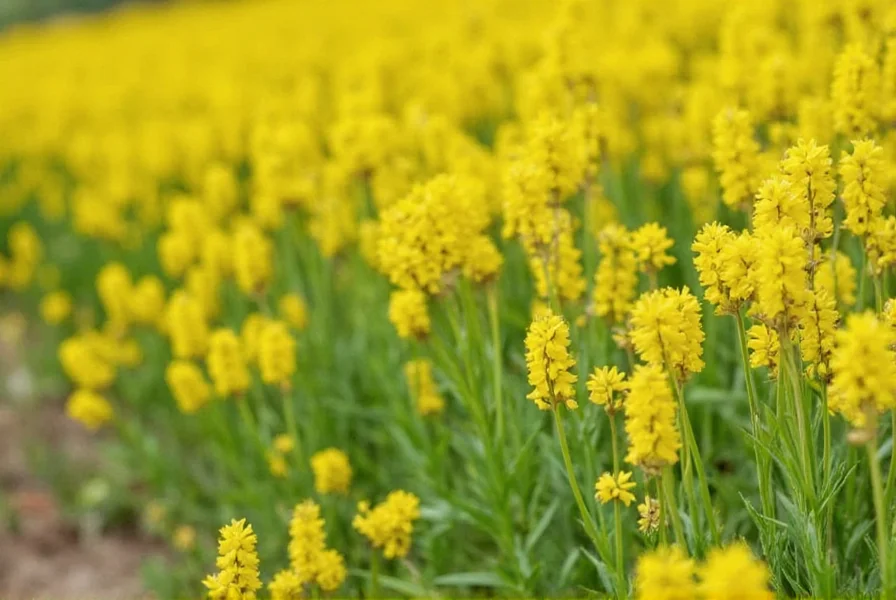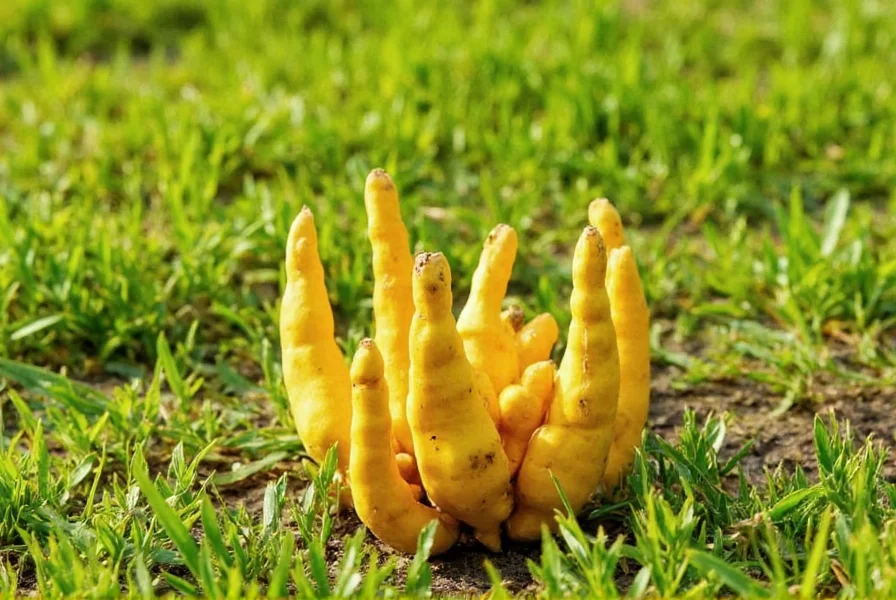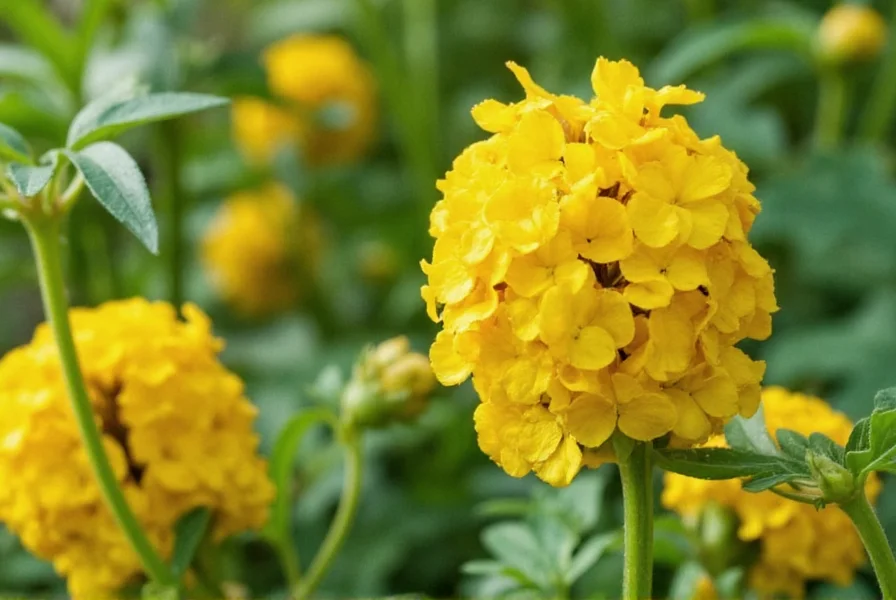Understanding how to cultivate turmeric plants successfully transforms your gardening experience from frustrating to rewarding. This vibrant member of the ginger family produces the golden spice central to many global cuisines and traditional medicine systems, but growing it requires specific knowledge that differs from common garden plants.
Understanding Turmeric Botany
Turmeric (Curcuma longa) belongs to the Zingiberaceae family, sharing characteristics with ginger and cardamom. Unlike what many assume, turmeric isn't a root but rather a rhizome—an underground stem that stores nutrients. The plant grows to 3-4 feet tall with long, oblong leaves and distinctive yellow flowers that appear before the rhizomes develop. The vibrant orange-yellow color comes from curcuminoids, with curcumin being the most studied compound for its potential health properties.
Optimal Growing Conditions for Turmeric Plants
Creating the right environment determines whether your turmeric plants will thrive or struggle. These tropical perennials originated in Southeast Asia and require conditions mimicking their native habitat.
Climate Requirements
Turmeric plants need warm temperatures year-round, ideally between 68-86°F (20-30°C). They cannot tolerate frost and will go dormant when temperatures drop below 50°F (10°C). The plants require high humidity (40-70%) and perform best with 60-80 inches of annual rainfall distributed throughout the growing season. In temperate climates, gardeners successfully grow turmeric as an annual crop during warm months or in controlled environments like greenhouses.
Soil Preferences for Healthy Turmeric Cultivation
The best soil for turmeric cultivation combines excellent drainage with moisture retention. These plants prefer loamy soil with pH between 5.5 and 7.5. Heavy clay soils cause rhizome rot, while sandy soils drain too quickly. Amend your soil with 3-4 inches of well-rotted compost or aged manure before planting to improve structure and nutrient content. Turmeric plants particularly benefit from soils rich in organic matter, which supports their extensive root system development.
| Growing Factor | Ideal Range | Minimum Requirement | Maximum Tolerance |
|---|---|---|---|
| Temperature | 68-86°F (20-30°C) | 50°F (10°C) | 95°F (35°C) |
| Soil pH | 5.5-7.5 | 5.0 | 8.0 |
| Sunlight | Partial shade (2-5 hours) | 2 hours | 6 hours |
| Water Needs | 1-2 inches/week | 0.5 inches/week | 3 inches/week |
Planting Turmeric: Step-by-Step Guide
Successful turmeric plant establishment begins with proper planting techniques. Unlike seeds, turmeric grows from rhizome sections, making timing and preparation critical.
Selecting Quality Rhizomes
Choose firm, plump rhizomes with multiple buds (often called “eyes”) from reputable sources. Avoid shriveled or moldy specimens. Organic turmeric from grocery stores sometimes works, but dedicated gardening suppliers provide varieties bred specifically for cultivation. Look for varieties like ‘Madagascar’, ‘Thai Yellow’, or ‘Indian Finger’ depending on your climate.
When and How to Plant Turmeric
Plant turmeric rhizomes in spring after the last frost when soil temperatures reach at least 50°F (10°C). In tropical regions, plant at the beginning of the rainy season. Cut rhizomes into 1.5-2 inch sections, each containing 1-2 buds. Allow cut surfaces to dry for 24-48 hours to prevent rot. Plant sections horizontally 2-4 inches deep with buds facing up, spacing them 6-8 inches apart in rows 12-18 inches apart. In containers, use pots at least 12 inches deep with drainage holes.

Caring for Turmeric Plants Throughout the Growing Season
Consistent care ensures your turmeric plants develop robust rhizomes. These plants require attention to watering, nutrition, and potential threats.
Watering Requirements for Optimal Growth
Turmeric plant care instructions emphasize consistent moisture without waterlogging. Water deeply 1-2 times weekly to maintain even soil moisture, increasing frequency during hot, dry periods. Reduce watering as harvest approaches to allow rhizomes to mature properly. Container-grown plants typically need more frequent watering than in-ground plants. Mulching with straw or wood chips helps maintain moisture levels and regulates soil temperature.
Fertilization Strategy
Feed turmeric plants every 4-6 weeks with balanced organic fertilizer (5-5-5 NPK) or compost tea. Turmeric particularly benefits from potassium and phosphorus during rhizome development. Avoid high-nitrogen fertilizers which promote excessive leaf growth at the expense of rhizome development. Incorporate wood ash (source of potassium) or bone meal (phosphorus) into the soil midway through the growing season.
Managing Pests and Diseases
Common problems growing turmeric include rhizome rot (from overwatering), leaf spot, and nematodes. Prevent issues by ensuring proper drainage, rotating crops annually, and removing affected plant material promptly. Natural pest control methods include neem oil sprays for leaf-eating insects and introducing beneficial nematodes to combat soil pests. In humid environments, ensure good air circulation around plants to prevent fungal diseases.
Harvesting and Processing Turmeric Rhizomes
Knowing when to harvest turmeric rhizomes separates successful growers from those who miss their window. Proper harvesting and processing preserves quality and flavor.
Determining Harvest Time
Turmeric typically matures 8-10 months after planting, signaled by yellowing leaves and drying stems. In cooler climates, harvest before first frost; in tropical regions, harvest at the end of the dry season. Gently dig around the plant to check rhizome size—they should be well-developed with multiple branches. Harvesting too early yields small rhizomes; waiting too long risks over-maturity and reduced quality.
Harvesting and Post-Harvest Processing
Carefully dig up the entire plant using a garden fork to avoid damaging rhizomes. Separate the main rhizomes from smaller “fingers.” Clean soil gently with water, then cure rhizomes by air-drying in a shaded, well-ventilated area for 7-10 days. For fresh use, store in a cool, dark place. For longer storage, boil rhizomes for 45-60 minutes, then dry in the sun or a dehydrator before grinding into powder.

Turmeric vs. Ginger: Key Differences for Gardeners
While both belong to the Zingiberaceae family, turmeric plants have distinct growing requirements compared to ginger. Turmeric generally requires more sun (though still partial shade), has a longer growing season (8-10 months vs. 8-10 months for ginger), and prefers slightly more acidic soil. Turmeric rhizomes are more compact and produce the characteristic yellow-orange color, while ginger rhizomes are more elongated with a tan exterior. Understanding these differences prevents common mistakes when growing both plants.
Troubleshooting Common Turmeric Growing Challenges
Gardeners often encounter specific issues when growing turmeric plants at home. Yellowing leaves typically indicate overwatering or nutrient deficiency. Small rhizomes usually result from insufficient growing time, poor soil nutrition, or overcrowding. If plants flower excessively, they may be diverting energy from rhizome development—pinch off flowers to redirect energy. In cooler climates, consider growing turmeric in containers that can be moved indoors during temperature drops.
Conclusion: Enjoying Your Homegrown Turmeric
Growing turmeric plants successfully requires attention to their tropical origins and specific needs, but the reward of harvesting your own vibrant, fresh turmeric makes the effort worthwhile. By providing the right soil, consistent moisture, and appropriate temperature conditions, you can cultivate this valuable plant whether in a garden bed or container. Homegrown turmeric often surpasses store-bought in both flavor intensity and curcumin content, making it a valuable addition to any garden focused on culinary or wellness applications.
Frequently Asked Questions
Can I grow turmeric plants indoors year-round?
Yes, turmeric plants can grow indoors year-round with proper conditions. Use a container at least 12 inches deep with drainage holes, place in a location receiving 4-6 hours of indirect sunlight daily, and maintain temperatures between 68-86°F (20-30°C). Indoor turmeric requires consistent humidity (40-70%), which you can achieve with a pebble tray or humidifier. Water when the top inch of soil feels dry, and fertilize monthly during active growth.
How long does it take for turmeric plants to mature from planting to harvest?
Turmeric plants typically require 8-10 months to mature from rhizome planting to harvest. The exact timeframe depends on climate conditions, with warmer temperatures accelerating growth. Signs of maturity include yellowing leaves and drying stems. In tropical regions with year-round warmth, turmeric may mature closer to 8 months, while in temperate climates with shorter growing seasons, it may take the full 10 months. Patience is essential, as harvesting too early yields small, underdeveloped rhizomes.
What are the best companion plants for turmeric in a garden?
Turmeric grows well with several companion plants that share similar growing requirements. Good companions include ginger, cardamom, and other shade-tolerant herbs. Turmeric also benefits from being planted near nitrogen-fixing plants like beans or peas, which improve soil fertility. Avoid planting turmeric near heavy feeders like corn or brassicas that compete for nutrients. In mixed gardens, position turmeric where it receives partial shade from taller plants like bananas or papayas, which mimic its natural forest understory environment.
Why are my turmeric plant leaves turning yellow?
Yellowing leaves on turmeric plants typically indicate one of several issues: overwatering (most common cause), nutrient deficiency (particularly nitrogen or iron), insufficient light, or natural senescence as harvest approaches. Check soil moisture first—the soil should be moist but not soggy. If overwatering isn't the issue, apply a balanced organic fertilizer. Ensure plants receive 2-5 hours of sunlight daily. If yellowing occurs late in the growing season with drying stems, it likely signals natural maturation and harvest time.
How do I store fresh turmeric rhizomes after harvest?
Store fresh turmeric rhizomes in a cool, dark place with good air circulation. After curing (air-drying for 7-10 days), place rhizomes in a mesh bag or cardboard box with ventilation holes. Ideal storage conditions are 50-60°F (10-15°C) with 70% humidity. Properly stored, fresh turmeric lasts 2-3 months. For longer storage, freeze cleaned rhizomes in airtight containers (up to 6 months) or process into powder after boiling and drying. Avoid refrigeration, which can cause moisture buildup and spoilage.











 浙公网安备
33010002000092号
浙公网安备
33010002000092号 浙B2-20120091-4
浙B2-20120091-4